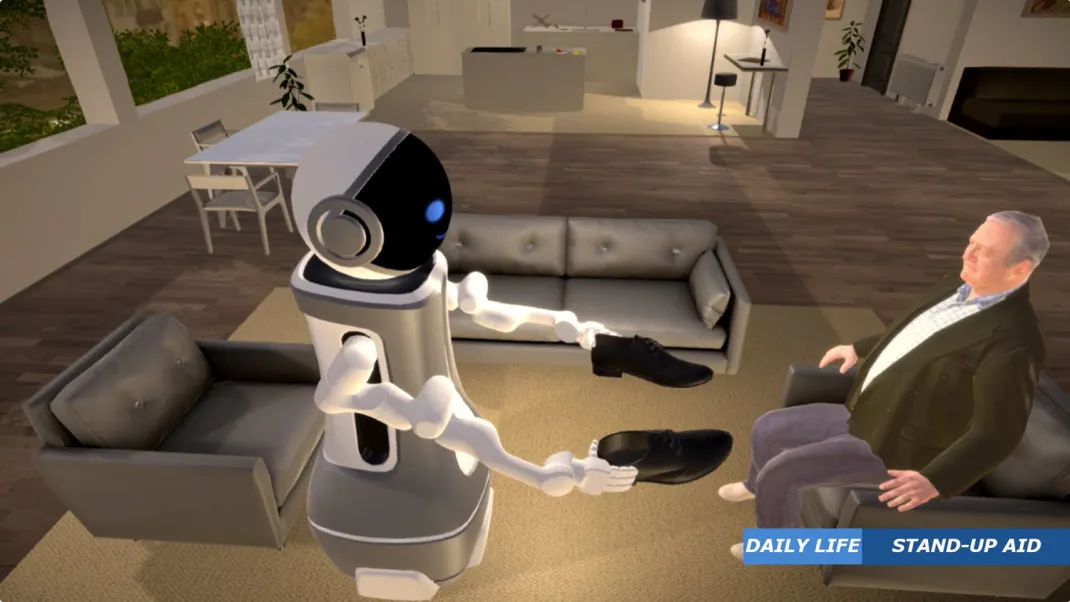Geriatrics, gerontology, and medical care for the elderly can highly benefit the research the field of robotics and machine intelligence. With our research we further develop personalized robots and assistive technologies that can provide optimum support to maintain and improve self-determination for elderly citizens’ daily life. The central goals are: Preserve mobility and social interaction, conserve independence and care for caregivers.
Preserve mobility and social interaction
Everyday tasks can quickly become a hurdle in old age. Robotics and machine intelligence are expected to be of assistance in age-related problems such as reduced physical or mental fitness and impairment due to illness and lack of social interaction.
Conserve independence
Often, and contrary to the person’s own wishes, it is then no longer possible to live independently at home. Consequently, many seniors decide to live in nursing homes because of their health impairments. However, due to the shortage of skilled personnel, they cannot receive the support they need to live a self-determined life.
Care for caregivers
Geriatrics technologies support and relieve caregivers in non-care tasks and non-ergonomic physically demanding activities, activities which in the long term have a detrimental effect on their health and thus increasing sick days. Geriatrics technologies are not meant to be a substitute for nursing staff, but a relief in day-to-day care by supporting time-consuming or strenuous activities.
ForGenderCare: Gender Aspects in Robotics for Elderly Care
ForGenderCare, funded by the ‘Bayerisches Staatsministerium für Bildung und Kultus, Wissenschaft und Kultur’ (2015-2019), explored social robots in elderly care, emphasizing diversity factors like gender. Interviews at retirement homes revealed diverse user preferences unrelated to gender. Shifting focus, the project developed adaptable robots offering entertainment, well-being tips, information management, and varied communication styles. Tested in two homes, results confirmed diverse user preferences and the robot’s ability to learn and adapt based on user feedback.




